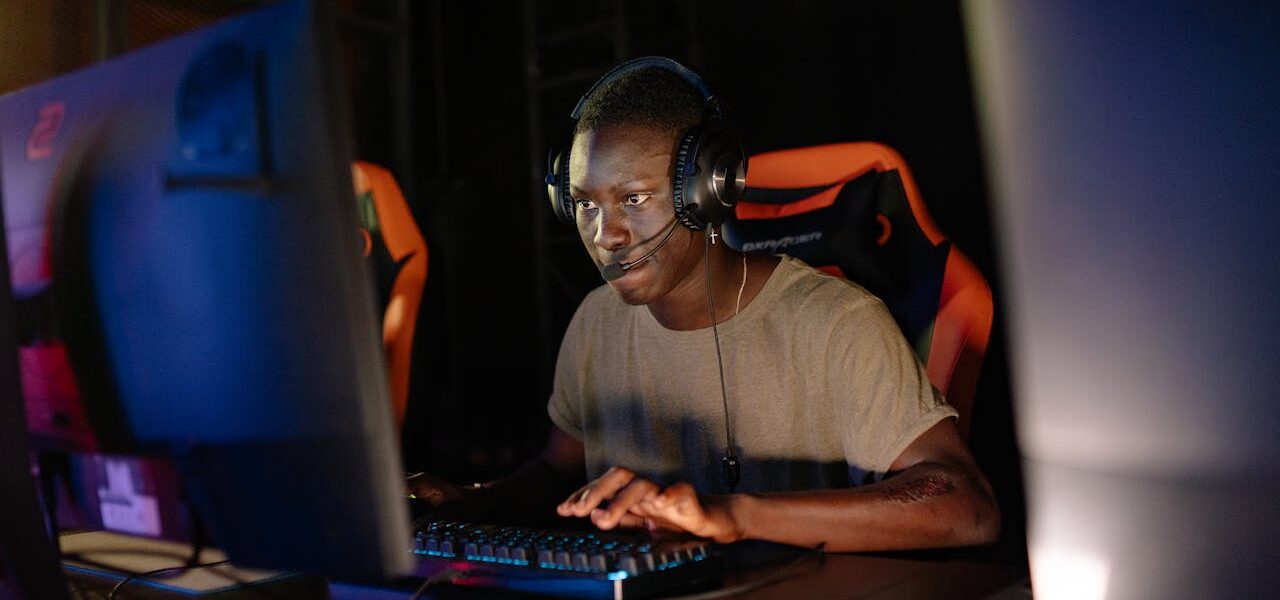Picture this: You’re sprinting through a French hedgerow, mud caking your boots, as artillery screams overhead. A teammate yells about a Tiger tank rolling toward your makeshift barricade. Someone else is demanding supplies now, and your squad leader is barking coordinates into the mic like a caffeinated auctioneer. Welcome to Hell Let Loose—a game where every match feels like directing a blockbuster war film while also starring in it. This isn’t your average run-and-gun shooter. It’s a 50-versus-50 tactical symphony where individual heroics get drowned out by the orchestra of teamwork. Let’s dissect how this behemoth works, from the boots-on-the-ground grunts to the big-brain strategists calling the shots.
The Symphony of Roles In Hell Let Loose Is More Than Just Bullet Dispensers
At its core, Hell Let Loose operates like a well-oiled machine—if that machine were made of 50 sleep-deprived humans arguing over map grids. The 14 roles split into four categories (Command, Infantry, Recon, Armor), each a cog in the war effort. Forget “lone wolf” mentalities here; success hinges on playing your part like a virtuoso. Understanding these roles is crucial for effective team composition, as each role complements others in unique ways. For example, a well-coordinated team will ensure that their Recon units are supported by Infantry, providing cover while they gather vital intel.
Command and Conquer (Without the Tiberium)
The Commander isn’t just some guy with a fancy hat. They’re the puppet master, juggling resource nodes, airstrikes, and the eternal struggle to get squads to actually build garrisons. Pro tip: Commanders who hide in the rear risk mutinies. The best ones are out there dismantling enemy spawn points personally. Then there’s the Officer, the squad’s beleaguered babysitter. Their job? Dropping outposts, relaying intel, and pretending they know how to read a map. A good Officer asks, “How’s your day?” at match start. A great one remembers to mute the guy who won’t stop humming Flight of the Valkyries. Commanders must also manage their resources wisely, ensuring they have enough Munitions for those crucial airstrikes. Meanwhile, Officers need to keep their squads informed and motivated, often through a mix of encouragement and sarcastic remarks.
Infantry – The Cannon Fodder With PhDs in Chaos
Riflemen are the janitors of war—mopping up stragglers, pinging enemies, and occasionally remembering to stick with their squad. Assault players? They’re the adrenaline junkies sprinting into smoke clouds, armed with grenades and a death wish. Meanwhile, Machine Gunners turn fields into no-go zones, their bipods deployed like they’re hosting a lead-themed picnic. Just don’t expect them to move anytime soon. Infantry roles require a deep understanding of the battlefield, knowing when to push and when to fall back. Additionally, communication is key among infantry units, as coordinating flanking maneuvers can turn the tide of battle.
Then there’s the Medic—the closest thing to a celebrity on the battlefield. Revives earn you more praise than a perfect headshot, especially when you yell, “I’M COMING, DARLING!” over proximity chat. Engineers and Support players form the ultimate power couple: one builds barbed wire nightmares, and the other plays supply Santa. Forget romance; nothing says “I care” like dropping ammo crates mid-firefight. Medics must stay alert, always ready to dash into danger zones to save their comrades. Engineers, on the other hand, need to balance defensive fortifications with mobility, ensuring they can quickly redeploy if needed.
Tactics – Or How to Not Die in 10 Seconds
This isn’t a game where you respawn and Leroy Jenkins into the fray. Hell Let Loose rewards the patient, the paranoid, and the mildly obsessive. Effective tactics often involve setting up ambushes in strategic locations, where enemy movements are predictable and your team can capitalize on the element of surprise. Additionally, understanding the terrain is vital, as it can provide natural barriers or hiding spots that significantly enhance your defensive capabilities.
Map Awareness: Your New Best Friend
The tactical map is your bible. Ignore it, and you’ll wander into enemy lines like a tourist asking for directions to the Eiffel Tower. Garrisons (spawn points) win matches, but building them requires Supplies—a resource only dropped by Support players or airdropped via risky supply trucks. Veteran move: Sneak behind enemy lines, plop a garrison in a bush, and watch the opposition panic as your team spawns in their rear. Understanding the map also means recognizing chokepoints and bottlenecks, where a well-placed ambush can decimate enemy forces. Moreover, map awareness helps players identify strategic locations for resource nodes, which are crucial for sustaining a prolonged battle.
The Art of Not Being Seen
Movement kills. Crouch. Crawl. Hide in that suspiciously clean outhouse. Flanking isn’t just encouraged; it’s mandatory. Recon teams (a Sniper and Spotter duo) excel here, picking off high-value targets like enemy commanders—or at least annoying the sniper enough to make them rage-quit. Stealthy players must be aware of their surroundings, using cover and concealment to stay alive. Additionally, the art of not being seen involves timing movements carefully, often waiting for distractions like artillery fire to mask your approach.
Resource Hoarding in Hell Let Loose – Capitalism, But for Bullets
Nodes—those unassuming little widgets built by Engineers—are the secret sauce. They passively generate Munitions, Fuel, and Manpower. Lose them, and your commander’s ability to call in strafing runs or tanks evaporates faster than a puddle in the Sahara. Pro tip: Build nodes early, then forget about them until someone inevitably blows them up. Resource management is a delicate dance, balancing the need for immediate firepower with long-term strategic advantages. Furthermore, protecting these nodes requires coordination with other roles, such as infantry providing cover while Engineers repair damaged nodes.
Teamplay – When “I” Becomes “We”
If Hell Let Loose has a mantra, it’s “Communicate or disintegrate.” Teamwork is about more than just following orders; it’s about anticipating what your teammates need before they ask. For instance, a Support player should automatically drop supplies when they see a garrison being built, without needing to be told. Effective teamplay also involves recognizing and adapting to the strengths and weaknesses of your teammates, ensuring that everyone contributes to the team’s overall strategy.
The Voice Chat Vortex
Three channels (Squad, Proximity, Command) mean your ears will be full of overlapping voices. Filtering this chaos is key. Heard a tank? Yell its grid location and direction. Reviving someone as Medic? Ask where the shooter was. And for God’s sake, tell your Machine Gunner before relocating—they’ll get separation anxiety. Effective communication involves setting clear objectives and coordinating actions across different roles. Additionally, using voice chat to call out enemy positions can significantly enhance situational awareness, allowing teams to react faster to threats.
Tank Crews In Hell Let Loose Are Metal Boxes of Friendship
Nothing bonds strangers faster than cramming into a Sherman. The Tank Commander plays navigator/psychic (“Left! LEFT! NO, YOUR OTHER LEFT!”), while Crewmen juggle driving and gunning. A well-coordinated tank squad can shred infantry lines, assuming they don’t get ambushed by a sneaky Anti-Tank player with a grudge. Tank crews must work in harmony, with each member aware of their role and the others’ limitations. Moreover, successful tank operations often rely on supporting infantry, who can clear out enemy anti-tank teams and secure flanks.
The Zen of Backline Roles
Playing Support? You’re the team’s pack mule, dropping supplies for garrisons and AT guns. It’s thankless… until you enable a game-winning push. Engineers turn chokepoints into fortresses, crafting the ultimate zen garden of barbed wire and sandbags. Just don’t expect anyone to notice until they’re using your bunker for cover. Backline roles require patience and foresight, understanding how their actions will impact the battle hours later. Additionally, these roles often serve as the backbone of the team, providing the logistical support that allows front-line units to operate effectively.
War Is Hell Let Loose (But Hell Is Weirdly Fun)
Hell Let Loose doesn’t hold your hand—it slaps it away and says, “Figure it out, buttercup.” Matches swing between moments of cinematic brilliance (“We’re storming the beach!”) and utter absurdity (“Why is there a jeep on the church roof?”). New players should embrace the chaos: stick with the squad, ask questions, and for the love of all that’s holy, build nodes. Veterans? They’re the ones herding cats—err, squads—while muttering about “back in my day.”
This isn’t a game you “win.” It’s one you survive, learn from, and occasionally laugh about—preferably while a teammate’s tank drifts into a river. Whether you’re the Medic making heartwarming saves or the Commander accidentally bombing your own troops, every match writes a story. And trust me, in Hell Let Loose, the stories are always epic.




